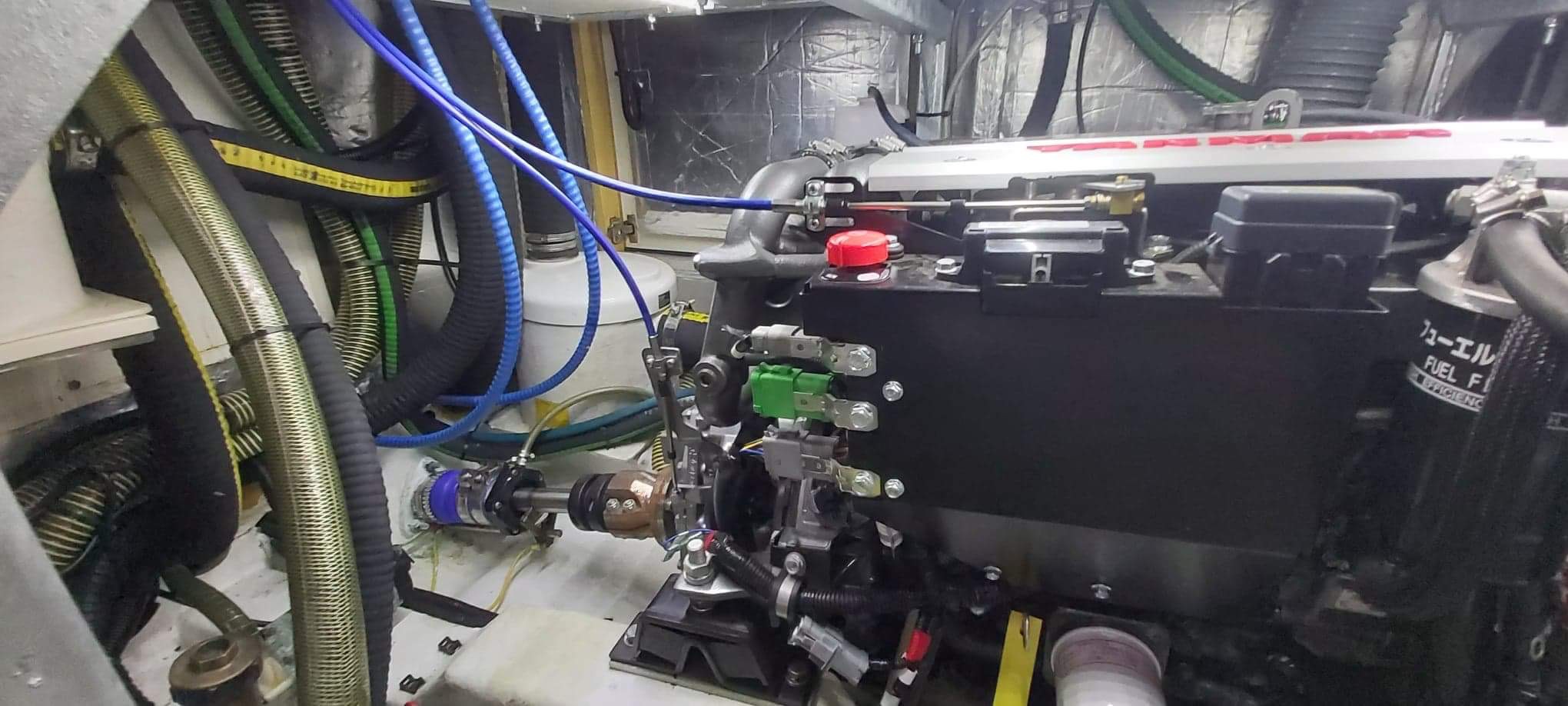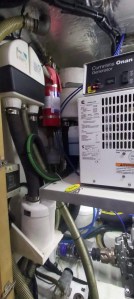Although, in the years of our ownership, Mariadz is reasonably well travelled and often used, we have not been excessive (ab)users of the sails even if they are used whenever possible. A number of people had told us that the sails had life in them yet but we had decided that before we go we wanted to be ready for the next ten years and that meant new sails.
We had already spoken to Dolphin Sails about new sails for number of years and originally we were quite happy with their quote until we asked them to refresh it and were told that there was a 10% uplift due to currency fluctuations (in an environment where the Pound had crashed against other currencies!). We didn’t go back to them after that. We were also interested in combining this work with the rig work being done to make sure that these were perfectly in tune. That led us to one sails who work closely with evolution rigging and we spent some time speaking to John Parker about our needs.
In due course, the quote came in which included three new sails and storm sails. We agreed that the existing twin headsail had hardly been used and should be fine for use, although we did identify a problem with it which needed to be addressed.
John came back with a quote which included five different options in sail cloth and cut. Maria and I pondered this for a while and eventually decided that we didn’t want the cheapest but weren’t sure we could afford the Dyneema Tri-radial sails which we assumed were more targeted at heavy users and racers. We returned to speak to John about our choices and to place an order. John is incredibly experienced and we have a rule that we always take advice from people who know what they are talking about. John is also a good salesman and convinced us that far from being race sails, the dyneema were the hardest wearing and for the length of trip we had in mind were perfect since they would retain their shape for the entire journey and wouldn’t need replacing – nice upsell! 🙂
Maria also wanted to change the UV strip as she continued her personal crusade to remove the colour dark blue from Mariadz! The new uv strips matched with the hull stripe and cockpit tent.
We decided to get these done and then to put the old sails back up for the last year in the UK. Shortly before departure we would replace our old sails, retune the rig if required and check the sails so that we were ready to go. For that last year, the sailmakers had offered to store our new sails.
Our flexibility meant that John was able to help us with the price and paying for them.
For our standard sails, we agreed to have a new main, staysail and headsail. The existing extra headsail, for our standard twin headsail setup, has barely been used and so we decided to keep that.  The headsail was the same Yankee cut that we had originally, we had explored making this larger but in the end we agreed to stay as we were. As for the main, we did not have vertical batons in our furling main. We have seen these on other M54 but at least one had significant issues with furling the main and we were happier not adding to the risk of a sail jam potentially at the risk of a little performance.
The headsail was the same Yankee cut that we had originally, we had explored making this larger but in the end we agreed to stay as we were. As for the main, we did not have vertical batons in our furling main. We have seen these on other M54 but at least one had significant issues with furling the main and we were happier not adding to the risk of a sail jam potentially at the risk of a little performance.  Finally, we agreed that we wanted storm sails for heavy weather, although our staysail is about the same size as the largest storm sail. It helped us define a smaller storm sail which should mean we have sails for all conditions, although we don’t expect to be out there in bad weather by choice!
Finally, we agreed that we wanted storm sails for heavy weather, although our staysail is about the same size as the largest storm sail. It helped us define a smaller storm sail which should mean we have sails for all conditions, although we don’t expect to be out there in bad weather by choice!
The sails were ready when Mariadz was put back in the water in August 2021 and once the rig had been refreshed, more on that in another blog. We were then in a position to have a test sail. This didn’t need to be too long, just up and down the river, checking the different points of sail. John was able to confirm that the sails were performing as expected and we were looking forward to seeing what Mariadz would do now on longer journeys. Maria is famous for not being a racer but being like Gandalf in Lord of Rings, standing there saying, “You shall not pass!”, the new sails should help ensure that remains the case.
The sails came off after the test sails and were stored for the winter before being put back on for our departure from Levington. We have since had the opportunity to test the sails in normal conditions and couldn’t be happier. Mariadz is flying through the water and feels a lot quicker. The sails are a lot better and it has really demonstrated how baggy our old main in particular had become. We couldn’t be happier and they look gorgeous too!











 There we’re some features of the old panel we liked such as the outline of the Moody with indicators for the lights being on. However, these no longer worked when we went to LED because of the lower draw of power. A simple change however. This would also provide an opportunity to remove the extra standard horizon chart plotter as part of the navigation overhaul, discussed elsewhere, and also give us room for an SSB.
There we’re some features of the old panel we liked such as the outline of the Moody with indicators for the lights being on. However, these no longer worked when we went to LED because of the lower draw of power. A simple change however. This would also provide an opportunity to remove the extra standard horizon chart plotter as part of the navigation overhaul, discussed elsewhere, and also give us room for an SSB.